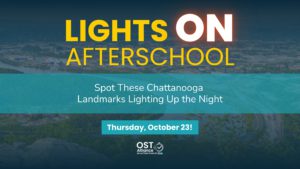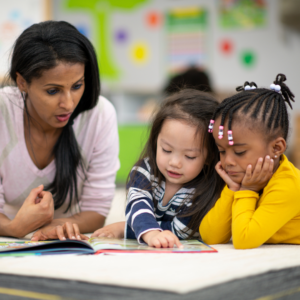TechTown is unlike any space I have ever been in. The lobby is filled with furniture that winds down the middle of the large hallway, and plush beanbags sit enticingly in the corners of the common spaces. Cordell Carter, the CEO of TechTown, sees the look on my face and smiles: “The kids stand behind the glass wall between the lobby and the large hallway, wide-eyed, then they come in and hold their hands to their chest not wanting to touch anything because they’re so used to being told not to. So I tell them to jump on the bean bag. They look at me unsure, so I tell them I’ll jump with them as long as we don’t do it head first.”
TechTown, in partnership with the Benwood Foundation, has been piloting their approach with three Hamilton County schools: Howard High School, East Lake Academy, and Chattanooga Girls Leadership Academy. Each of these schools visits once a week for field experiences like game design (deconstructing and creating) and 2D and 3D design (basic principles, softwares, and 3D printers).
As videography instructor Jon Hoppe explains, “I believe that TechTown can fill in the technology gaps most schools are not able to fill. Many times we bridge off of things teachers are already doing with technology and are a great supplement to the learning process. Other times, the school may not have a path for a particular technology, so TechTown becomes a resource for rounding out a school’s overall curriculum.”
Part of Hoppe’s goal is to keep the students doing something different every 20 to 30 minutes in a session; “more than 10 minutes of lecture just doesn’t work anymore. We are not here to entertain kids, but the fairly new term of ‘entertrainment’ does comes to mind in the way we deliver learning. I believe in all our teaching there are elements of creativity, collaboration, exploration, experimentation and fun.”
With East Lake, TechTown did a number of video production projects. Throughout the semester, the students were required to explain and storyboard their proposed project before that could actually film. Hoppe explained, “the purpose of this prep work is to demonstrate how important planning and preparation is to a project, especially in a film project where deadlines are important, money may be invested, and many people and other resources might be involved.”
I was fortunate to see one of the projects completed by an 8th grader at East Lake Academy while teaching there last semester, when literature teacher K.P. Logue asked her students to write a science-fiction story. She describes the project; “Their prompt was: ‘You walk into the gym, but it is a forest.’ Then they were told to write. As we worked through our unit, we added to our story, incorporating elements like setting, tone, mood, etc. The kids were so excited to find out they were actually creating a story, and they were able to take their personal short stories to the next level with digitizations [at TechTown]. They learned how to storyboard their ideas, operate the equipment in many different roles, work as a team, and edit.”
The presentation I got to see was shown at East Lake’s Fall Festival. I hadn’t seen the students flourish and revel in their work like they did that night. The presentation shown on the big screen by one of Mrs. Logue’s students was being heard by a large audience, something few people experience, and his story was projected to his East Lake community supporters and families with him at center screen, graphics and sound-effects added elements to his story that would have been impossible without visiting the extension of his TechTown classroom downtown.

Hoppe often sees this type of “I have a voice, and I am awesome, too!” reaction at TechTown, and he savors it: “I love when parents visit, and their child grabs them by the shirt sleeve and pulls them back to an editing station to show off their work. There is something about creating a video that gets students’ attention, makes them want to show the world what they can do and often brings them out of their shell in the process. Every kid has a story. How to tell that story — front to back, middle to the ends, or end to beginning — using a storyboard to visualize it, is an art to be studied and developed. When a student is able to break down his or her story, or even someone else’s story, he or she steps back and sees what each part does to affect the other. I can’t say that every child that comes to TechTown goes through a transformation, but I can say that the TechTown experience is a place where that can and does happen.”
The TechTown team works to inspire the next generation of innovators by creating a place where kids discover, learn, and explore the limitless possibilities of their imaginations. As Hoppe says, “for a kid to get his or her toes wet in the business world, especially in technology, allows the possibilities to open up to them. Just being able to visualize a future in technology or in using technology can be a game changer for a young person.”
Lauren Dyer
Chattanooga Area Chamber of Commerce
Chattanooga 2.0 Program Assistant





